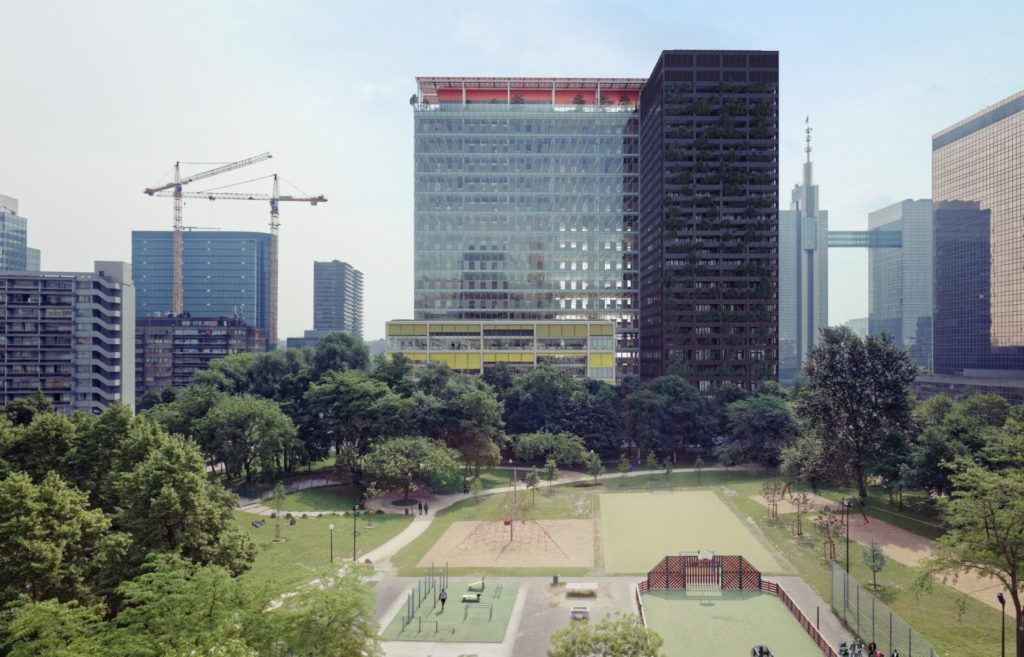In recent years, Brussels' Northern district has become a nondescript, concrete jungle of office buildings. But now, the city is working on improving the area's image, and doing so with a unified vision and help from local residents.
Of all the areas being improved by the Brussels regional government, this district struggles to outgrow its past identity, the legacy of a miscalculated 1960s vision to turn it into a "small Manhattan," explained Damiaan De Jonge, spokesperson for State Secretary for Urban Development Pascal Smet.
"The area, especially around the North station, is known as a grey office zone, and especially with the increase in teleworking, it is largely dead in the evenings and during weekends," he told The Brussels Times.
In recent years, the government has approved many projects in the district on a public and private level. These range from new parks and cultural houses to the creation of metro line 3.
Smet has been appointed to coordinate the transformation and development of the area, including the Manhattan, Brabant, Masui, Saint Roch and Saint Lazarus neighbourhoods. This is all within the framework of Brussels' vision for "Noordwijk 2.0."
Five pillars for improvement
Among the projects currently underway are plans to create a temporary green space with sports fields and a skate park on the site of the soon-to-be-demolished CCN building at the North Station. The ZIN tower project will repurpose the cores and underground parking of the existing WTC I and II towers.

The ZIN project will comprise offices, a large co-working space, flats, hotel rooms, restaurants and shops. Credit: Befimmo
The Brussels planning agency Perspective Brussels structures ongoing and future projects around five major principles, the first being multifunctionality, which aims to rejuvenate the district by ensuring it isn't only a place for work.
Projects like the ZIN tower and the repurposing of the IBN tower near Botanique will create office space alongside catering establishments and housing opportunities.
The second pillar is conviviality, which seeks to improve the neighbourhood for people of all demographics: "We want to ensure that the housing supply is available to a wide range of people," De Jonge explained, as many people in the district live in poverty. Activities will also be organised and sports areas integrated.
Related News
- Terraces or gardens should be compulsory in new buildings, says Pascal Smet
- How Brussels got its mobility act together
Brussels hopes to generate more cultural activity in the district, through projects such as the KANAL Centre Pompidou; this will make the area more lively.
As a whole, Brussels is grappling with a housing shortage, but the regional government hopes to address this issue whilst creating more green spaces at the same time. This fits with the city's "city garden" concept that should prevent urban densification from reducing green areas.
"If we redesign axes, such as the Boulevard Albert II and the Boulevard Simon Bolivar, we can connect several green spaces, creating a city in a public garden, in a sense."
The final and vital pillar is connectivity: "The area is already well connected thanks to the North Station, but this can be used better, along with the inclusion of metro line 3 and a new tram line."
Putting the public first
The government, acting as the "public's representative," will ensure that new projects conform to these principles before they are approved.
"In the past, the permit procedure came after the project had already been made; now we take a hand-in-hand approach with project planners and developers to ensure that all parties are aware of what is expected from them," De Jonge said. Meetings before projects are initiated also prevent delays, he added.
In the discussions, Smet and his cabinet aim to represent the needs and desires of local residents and people who frequently visit the area. To find out what these are, Perspective Brussels launched a second public consultation which runs until 6 March. On 16 February, an information meeting will also be held to discuss the expectations of residents and interested parties.
"The idea is for people to say what they would like to see change and where they think extra attention is needed. This shared vision will then be considered and included in the next development steps; residents and interested parties are involved from the start."

